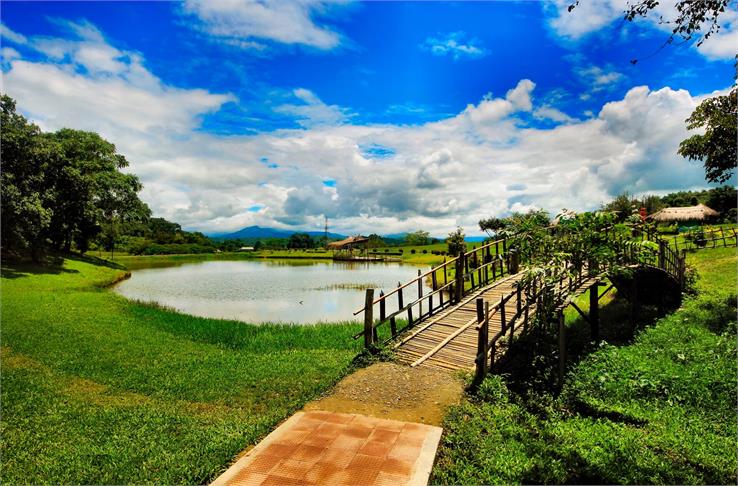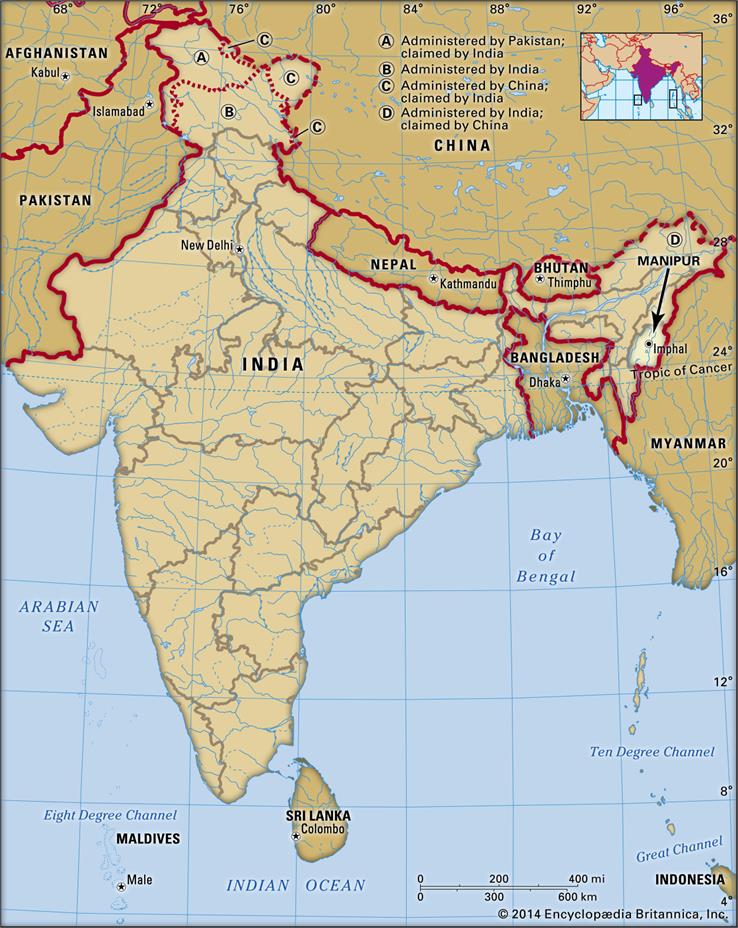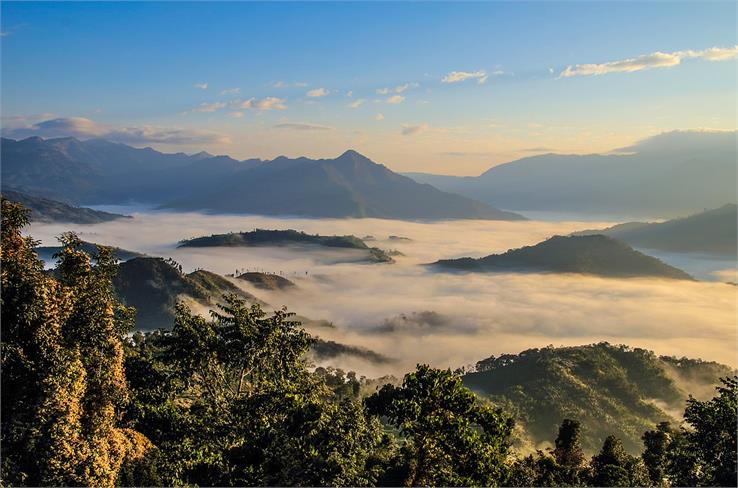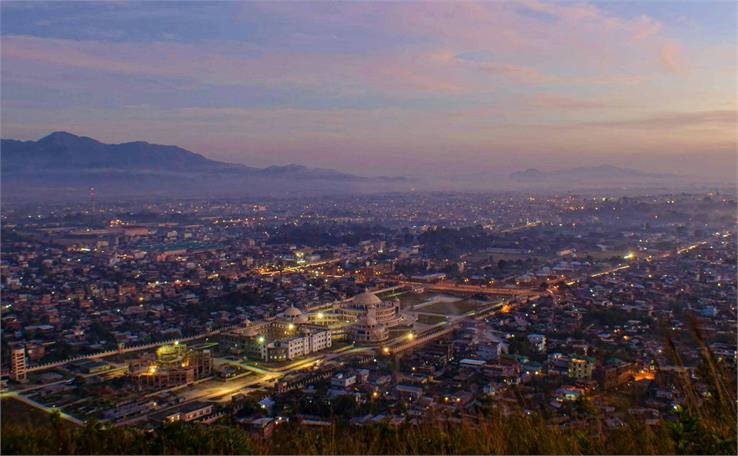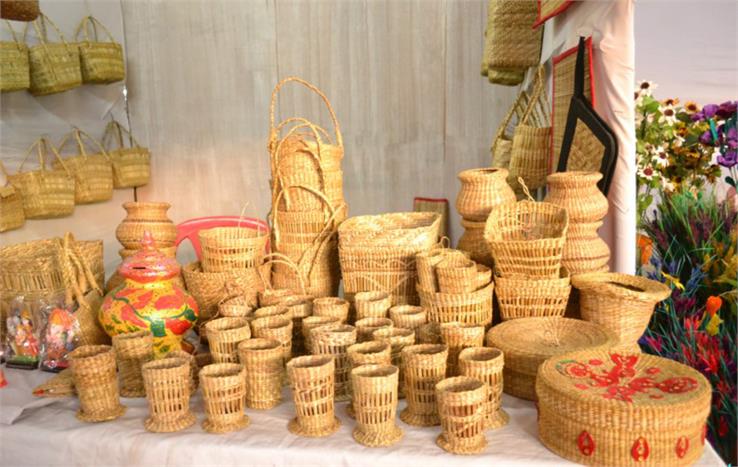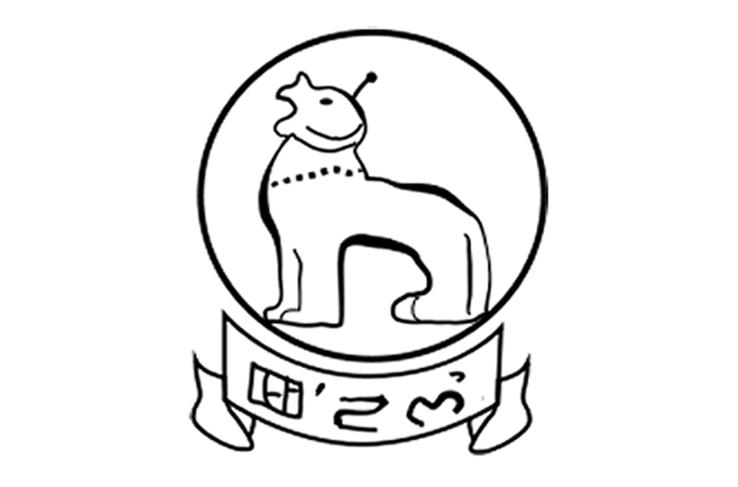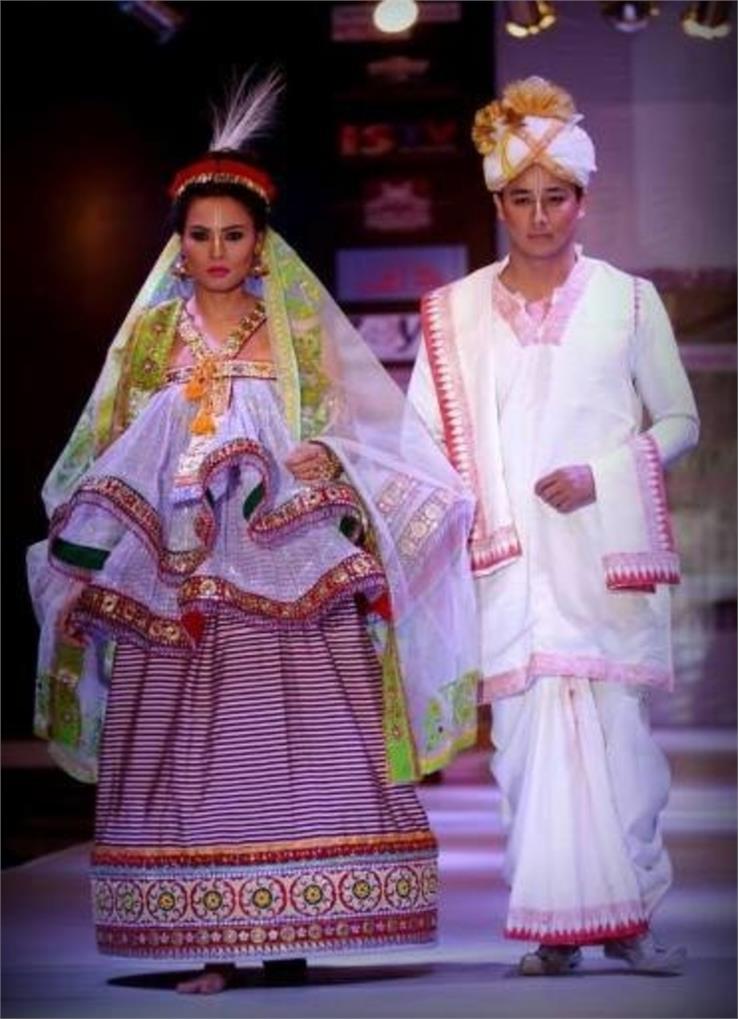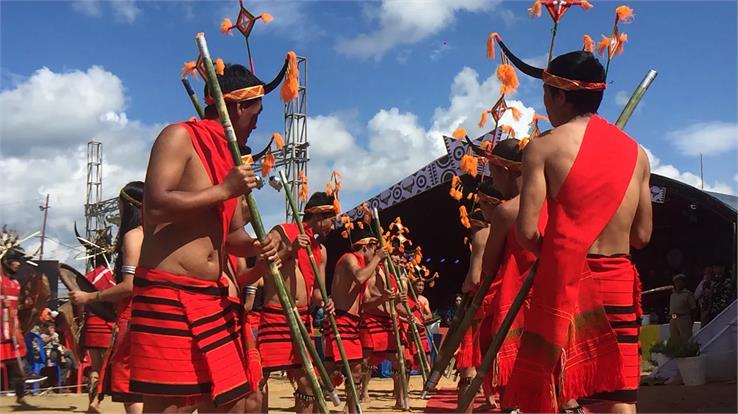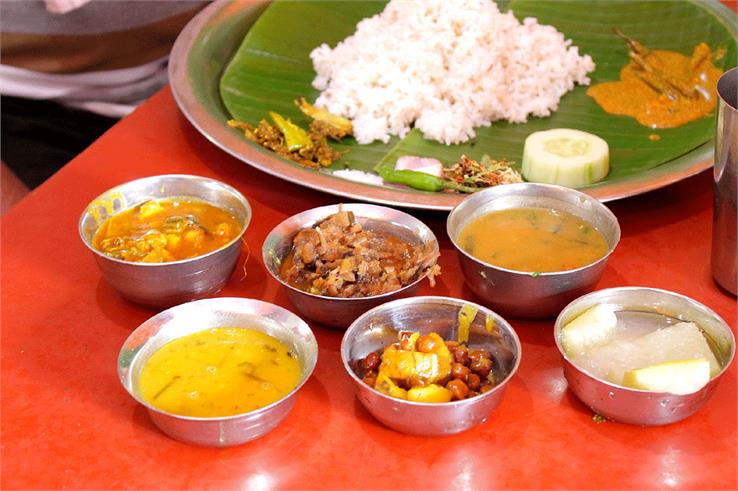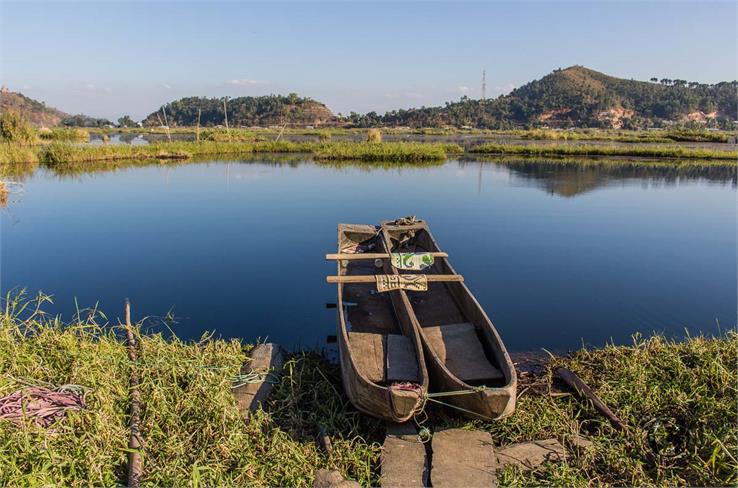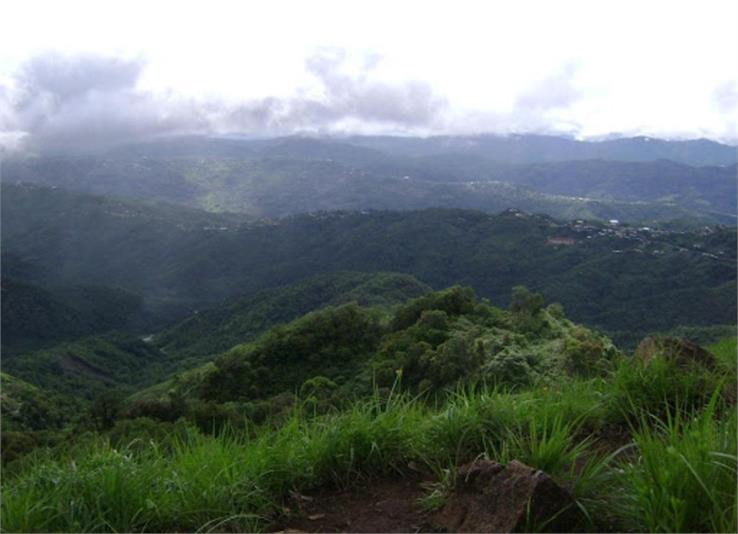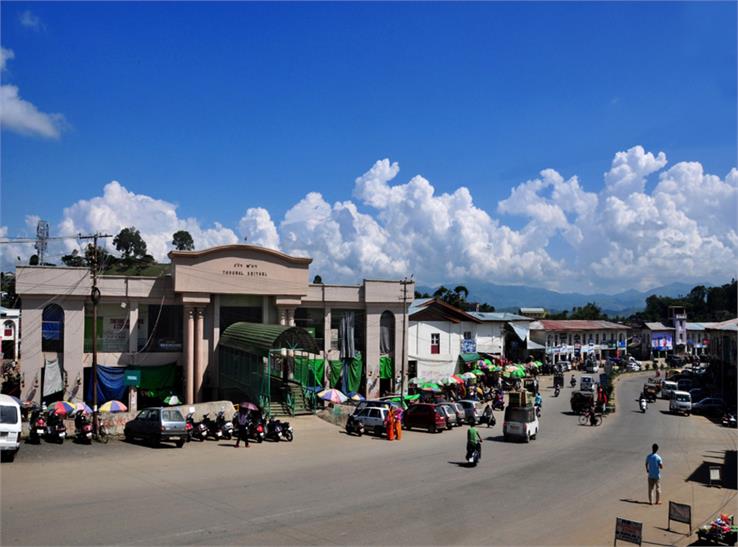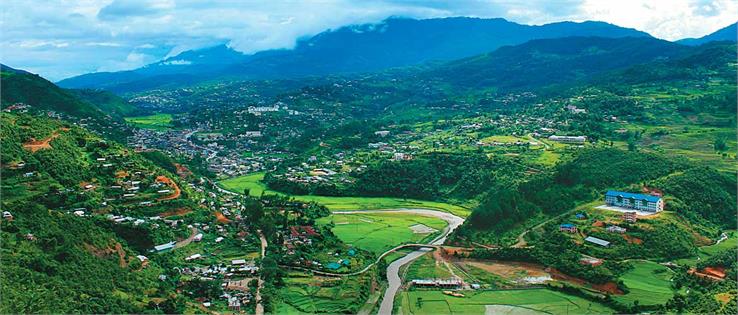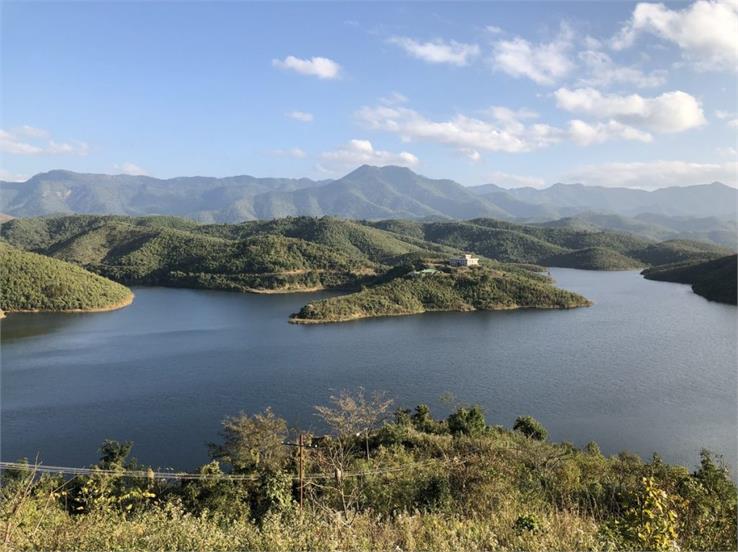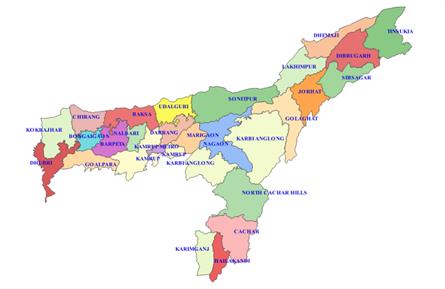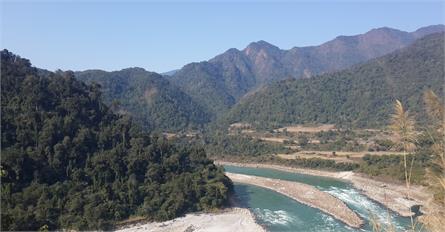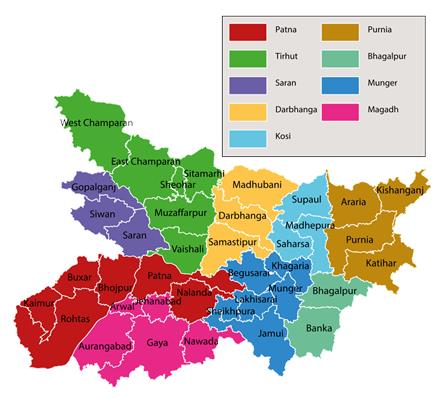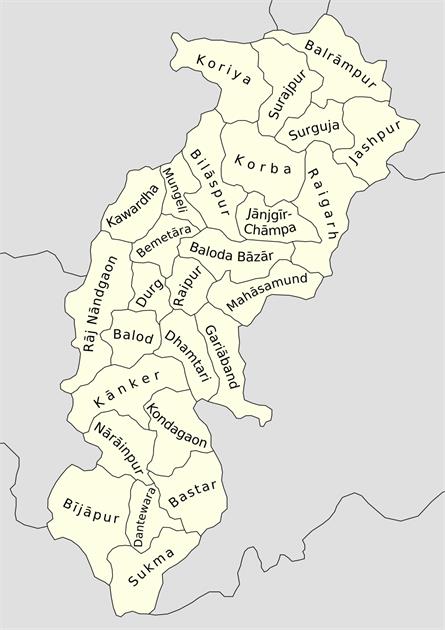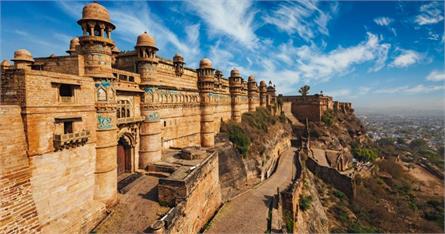Manipur - The Land of Gems
'The Land of Gems,' Manipur is an outstanding tourist destination located in the northeastern part of India. The beautiful state of Manipur is inhabited by people from various cultures such as Kuki, Naga, Pangal, and Mizo, who speak many languages. It can be said without hesitation that Manipur is a paradise on earth. The grace and grandeur of nature are abundant in Manipur.
The rare species of deer that grows on the Sangai and Shirui mountain is found here. St. Clair Grimwood, the author of the famous book 'My Three Years In Manipur' describes the state as a pretty place more beautiful than many show places of the world. Lt. Pandit Jawaharlal Nehru expressed his reverence for this place in the most appropriate way by calling it the "Jewel of India." Manipur is bounded by Nagaland in the north, Mizoram in the south, Upper Myanmar in the east, and Cachar district of Assam in the west.
Manipur has abundant reserves of natural resources. The natural shade and colorful floral vegetation of the state are worth seeing. Some rare flora and fauna are also spotted here. There are dense forests, rivers with clean water, and picturesque natural beauty in the mountains.
History

Manipur has a long and glorious history even before the era of AD. The written history of the dynasties here dates back to the accession of Pakhangba in 33 CE. After that, many kings ruled Manipur. The independence and sovereignty of Manipur continued until the early 19th century. Seven years consequently (from 1819 to 1825), the Burmese rulers occupied and ruled here. Manipur came under British rule in 1891 and became independent with the country in 1947. On January 26, 1950, when the Indian Constitution came into force, it became a part of the 'C' State of the Union of India under a Chief Commissioner. Later, a regional council was formed with 30 members by selection and two members nominated.
Subsequently, in 1962, under the Union Territory Act, the Legislative Assembly was constituted by 30 members and three nominated members. With effect from December 19, 1969, the post of Administrator was elevated to the position of Chief Commissioner. On January 21, 1972, Manipur received full statehood, and a 60-member assembly was formed. There are 19 seats reserved for Scheduled Tribes and Scheduled Castes in this Assembly. There are two Lok Sabha and one representative of Rajya Sabha from Manipur.
Geography

The state of Manipur is located at the eastern end of India. With an area of 22,327 sq km, Manipuri is a susceptible border state. Geographically, Manipur has two parts, hills, and valleys. The valley is in the middle of the state, and hills surrounding the valley. The valley of Manipur is about 790 meters above sea level. This mountain range is higher in the north, and when reaching the southern part of Manipur, it becomes less high. The slope of the valley extends from north to south. Nagaland is situated in the northern part of this state and Mizoram in the southern region. Assam and Myanmar are on the western and eastern side of Manipur. Manipur is an eastern state of India, and Imphal is the capital of the state of Manipur. Mizoram borders the state of Manipur to the north and south, Assam to the west, and Myanmar to the international border in the east.
Due to the rich and varied geography of Manipur, many tourists are interested in visiting this state. There are four major river basins of the state, which include the Manipur River Basin, Barak River Basin, Yu River Basin, and Lanye River Basin. The entire water resource here is about 1.8487 million hectares. The Manipur river basin consists of about eight rivers. The names of these rivers are Manipur, Iril, Chakpi, Sekmai, Khuga, Thobal, Nambul, and Imphal.
Manipur consists of 16 districts, which are as follows:
- Bishnupur
- Chandel
- Churachandpur
- Imphal-East
- Imphal-West
- Senapati
- Tamenglong
- Thoubal
- Ukhrul
- Kangpokpi
- Tengnoupal
- Pherzawl
- Noney
- Kamjong
- Jiribam
- Kakching
Capital of Manipur

Imphal, the capital of Manipur, is a prominent tourist place in northeast India. Modern Imphal has undergone many changes due to the growth of tourism and many other industries. In 1997, the capital was divided into two parts East and West, and these two parts are known as East Imphal and West Imphal. It is a small city where you feel that you are in another world. Beyond the hustle and bustle of life, this city keeps going at its slow pace, and it's beautiful valleys and landscapes give you a delightful and unforgettable experience. The city is considered to be one of the oldest cities in the country. The climate of the city is healthy and there is tropical monsoon, every year.
Demography
According to the 2011 census, the total population of Manipur is 27.2 lakhs. The rural population is 1,736,236 and the urban population is 8,34,154. The average population density of Manipur is 122 per sq km. The people living in Manipur can be divided into three major tribes, which are the Meiteis, the people living in the valley, and the main tribes living in the mountains. The tribes living in the mountains can be divided into two more sub-castes which are Kuki-Chin and Naga.
Economy and Infrastructure
The economy of Manipur is continuously improving. Due to the positive attitude of the government, the economy of this province has helped to flourish. There are about 7,700 small scale industries in Manipur that helped in boosting the economy of the state including handlooms, village industries, cottage industries, and handicrafts.
The Government of Manipur is making every effort to strengthen every aspect of the state's economy and is giving a strong foundation to the state. There are many small companies here which are manufacturing various items like plastics, electronic goods, and steel. This has an overall good effect on the state's economy.
The establishment of some cement industries in Manipur also has a special contribution to the economy of the state. In order to further raise the level of the state's economy, the Government of Manipur has decided to open several training institutes so that people get the opportunity to learn new techniques and develop their business.
Agriculture
Agriculture is the mainstay of the state's economy, and 70 percent of people depend on agriculture. The total agricultural area in the state is 10.48 percent. The grain production in the state is moderately low, but oilseeds and pulses production is deficient.
Agriculture and forestry are the major sources of income in Manipur. Rice, the main crop of the state, is grown in 72 percent of the area, and corn (1.79 percent), sugarcane, mustard, tobacco, fruits, vegetables (potato 1.7 percent), and legume (such as peas and beans) are grown in the fertile land. There are usually terraced fields on the hills, which are plowed with a spade by tribes. Some hill tribes domesticate animals not to extract milk or carry burdens, but for meat. The irrigation takes place through canals. Nagas are said to use narcotics for fishing. About 7,500 tonnes of fish are caught annually, which cost around five lakh rupees. The officially registered forest area in the state is 15,154 square kilometers, but the actual forested area is 17,418 square kilometers, which is 78 percent of the total area. Teak wood is the leading forest product.
Industry
Construction in the state is limited to several well-established cottage industries. There is a demand for handmade knitwear fabric in India as well as abroad. Other sectors include silk, bamboo and cane items, soap making, carpentry, and tanning. An industrial complex has been set up at Imphal, which also houses an electronics plant. Manipur is still largely isolated from the rest of India, and communication facilities within the state are inadequate.
Commerce and industry

The handloom industry is the most employable cottage industry after agriculture. This industry is an essential source of income, especially for women weavers. The traditional skill of handloom weaving is a symbol of prestige for women. It is an inseparable part of their social and economic life. Food processing is another popular industry in Manipur. Considering the importance of this industry, the State Government has set up a Food Processing Training Center and Food Processing Training Hall at Imphal. A 'food park' is also built in Imphal.
With the commencement of border trade between the Government of India and Myanmar from 12 April 1995, the Department of Commerce and Industry of the State Government is working for the promotion and development of border trade. To increase the border trade, a rest house has been set up in the border town of Moreh (a town in Manipur) for warehouses, conference rooms, and lodging facilities.
Handloom and Handcraft
The art of making pottery is associated with products made of cane and bamboo in Manipur's handicraft and creation. The art of pottery making in Manipur has been practiced since ancient times. The raw material is available in large quantities for the production of bamboo and cane. Various types of baskets, furniture, and household items such as cane and bamboo are the prevalent occupation of the residents here.
Handloom production is carried out by three government agencies. They are as follows-
- Manipur Development Society (MDS)
- Manipur Handloom and Handicraft Development Corporation (MHHDC)
- Manipur State Handloom Weavers Co-operative Society (MSHWCS)
Irrigation
Irrigation projects were started in the state in 1980. So far, eight major and medium projects have been taken up, of which five have been completed by the end of the eighth plan period.
Currently, three major and medium irrigation projects are underway. After completion of these three projects, the irrigation requirements of the state will be fulfilled. Completion of these projects is the primary objective of the state. The Thoubal multipurpose project is partially completed. It has the capacity to irrigate an area of 4000 hectares. On completion of the ongoing projects, the 106950-hectare area will be irrigated.
The major irrigation projects in the states were started in 1980. The irrigation projects that have been undertaken since then are as follows:
- Loktak Lift Irrigation Project
- Korum Dam, Sekmai Bouraj
- Imphal Barrage
- Singada Multipurpose Scheme
- Khuga multipurpose project,
- Thoubal Multipurpose Project
- Dollethby Dam Multipurpose Project
Electricity
As of March 2006, the state had a capacity of over 42.750 MW, and more than 2,000 villages have electricity. Central sector powerhouses like NHPC's the Loktak Hydropower Project, Kopili Hydropower Project, Khandong Hydro Power Project, Dayong Hydropower Project, Ranganadi Hydropower Project, Kathalgudi Hydropower of AGBPP, and Ramchandra Nagar Project of AGTPP (all under NEPCO) have shown significant improvement in the power supply of the state.
Information Technology
For the IT industry in the state, the Government of Manipur gives priority to the development of electronics and information technology. 'Manipur Industrial Corporation' has been formed to develop industries based on electronic and information technology in the state with the following objectives:
- Establishment of IT parks, service centers, and information centers.
- Establishment of 'Manipur State Wide Area Network' for transmission and propagation of voice, data, video.
- Provide 'Multi-Functional Electronic Smart Card' to the citizens.
- Promote IT in schools and colleges Promote.
- Enhancing distance education through IT.
Forestry
The total area under forest cover is 17,219 sq km of which 6,536 sq km falls under dense forest while 10,681 sq km falls under open forest. The forest cover deems 77.12 percent of the state's geographical area. In Shirai village of Ukhrul district of Manipur, flowers called Lilium (lily) are found. The rare species of Dzüko Lily (Lilium chitrangadae) is also found in the Dzükou Valley. The state of Manipur is noted for its bio-wealth, where many types of rare flora and fauna exist. 'Sangai' deer (Cervus eldi), which is rare in the breed, is found in the natural forest area of Keibul Lamjao. The area of Keibul Lamjao is spread across 40 sq km. In 1977, it was declared a 'National Park.' Its specialty is a floating garden with flora called 'Phumdi.' The number of 'Sangai' has increased to 180 since 2003 with the protection measures of the State Government. In 1975, it was only 14.
Apart from 'Keibul Lamjao National Park,' ''Yangoupokpi Lokchao Wildlife Sanctuary' is also a protected area, which spreads across 184.40 sq km. The wildlife sanctuary is located in Chandel district. 'Malayan Bears' are found in this sanctuary.
The state has extensive reserves of biological wealth. Large tracts of forests are preserved. Among them, species of rare medicinal plants called Taxus baccata (English Yew) and ginseng is kept. This state is home to various unique flora.
Government

The state government is the most substantial governing authority in the state of Manipur. The government structure includes the legislative branch, the governor, and the judiciary. The Governor of Manipur also appoints the President like other states. This appointment process is completed with the advice of the central government. Imphal, the capital of Manipur, has a legislative assembly and a secretariat. Some of the major state-level political parties in Manipur include the Federal Party of Manipur, Naga National Party, Nikhil Manipuri Mahasabha, and the People's Liberation Army of Manipur. Apart from the names mentioned above, there are other political parties, such as the National People's Party and the Democratic Revolutionary People's Party. In order to run the government efficiently, different councils are divided into different wards.
Education
Today, Manipur has seen a lot of improvement in the education sector. Until the last few years, education was confined only to the higher strata of Manipur. Some of the reasons behind the education system of Manipur in the last few decades were communal conflict, economic blockade, and continued violence. A significant change in the education scenario appeared when the new education system was adopted. There has been a tremendous improvement in the number of people passing through the first division. The positive role of educational institutions cannot be denied behind this increase and high cut-off.
Cultural Life
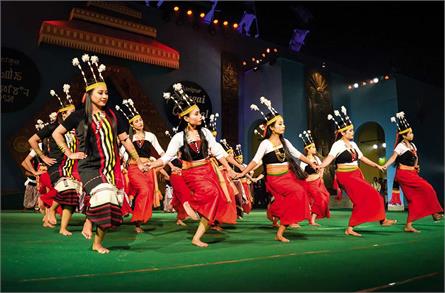
Simplicity and preferences of equality are the real values of Manipur's society. The people are cooperative and affectionate. Women have a very high status in society and the elders are highly regarded here.
People love all kinds of sports, and the world has got the game of polo from the state. Polo and hockey are popular sports in the state. Manipur gave birth to Manipuri dance, a local style of classical dance. Apart from this, Manipuris are excellent warriors and practice wrestling, swordplay and martial arts.
Three major tribes reside in the state. Each tribe has a distinct culture and customs that are reflected in their dance, music, and traditional practices. Manipur is a state of artists; it is well reflected in the products they produce like khadi and handicrafts. These products are known worldwide for their unique design, skill, and utility. Nepalese (migrated from Nepal) are also settled in the many areas of the state.
Language
Manipuri (or Meetai language, or Maitai language) is the main language spoken by the people of the lower parts of Assam and the Manipur province of India. It also has several dialects. The Manipuri language is written in the Meitei Mayek, also spelled as Meetei Mayek script and in the Eastern Nagari script. It is also spoken in Assam, Mizoram, Tripura, Bangladesh, and Myanmar. It has approximately 11 lakh 80 thousand speakers. Still, the actual number of Manipuri speakers is much higher as it is the only medium of communication between 29 different ethnic groups with varying tongues of mother in the state. 60% of the state's population speaks Manipuri. It is the first Tibeto-Burmese language to be included in the Eighth Schedule of the Indian Constitution.
Transport
Roadway
The road network in Manipur is outstanding. National Highway No. 39 connects Manipur to other major cities of Northeast India like Guwahati Dimapur, Kohima, Silchar.
The state is well connected to the various other states of the country through national highways. Three National Highways in Manipur:
- National Highway - 39
- National Highway - 53
- National Highway -150
Railway
Manipur has also joined the rail-map of the country. The rail line reached Jiribam in May 1990. Jiribam is 225 km away from Imphal.
The Tupul railway line has been declared as a national project.
Airway
The Imphal Airport is the second largest airport in the North Eastern Region, connecting Manipur to Aizawl, Guwahati, Kolkata, Silchar, and New Delhi.
Indian airlines like Jet Airways, Indigo, and Air Deccan, Alliance Air, Spice Jet, and Kingfisher have regular flights to this city and other cities in Northeast India.
Traditional Attire of Manipur

The traditional attire of the state illustrates the culture of Manipur. People of Manipur wear a beautiful dress, which is quite simple but attractive. Manipur men mainly wear white-colored dhoti kurta and a turban. The women wear a unique type of clothing known as Inaphi and it looks like a Shawl. The Inaphi has attractive borders and gorgeous designs all around.
Fair and Festivals
The state of Manipur can be defined as the land of celebration. All the festivals in the state are observed with great enthusiasm and vigor. The festivals of Manipur are a tribute to the rich culture and heritage of the state. In fact, these festivals symbolize their cultural, social, and religious aspirations. The festivals of this state are deeply rooted in Hindu mythology and old-cultured traditions. The multi-colored festivals of this state also remove the monotony of daily life by providing mental entertainment, physical diversity, and emotional outlets. The major festivals commemorated in this state are:

- Yaoshang - This festival is celebrated for five days starting from the full moon date of Phalgun month or from the months of February/March. It is indeed one of the major festivals of Manipur.
- Lai Haraoba - This festival represents the worship of traditional deities or ancestors and is one of the most joyous celebrations in Manipur. The festival is a spectacular combination of religious singing, classic songs, and dances. The people of Manipur observe it in the month of May in honor of the local deity Umang Thai.
- Kang (Rath Yatra) - The people of Manipur celebrate this remarkably popular festival for ten days in the month of June/July. Idols of Shri Jaganatha, Shri Balarama, and Shri Subhadra are worshipped during this Yatra festival.
- Kut Festival - This festival is celebrated with equal zeal and enthusiasm in all the districts of Manipur and is considered to be one of the most desired festivals of Manipur. It is generally regarded to be a post-harvest festival celebrated during the autumn months.
- Ningol Chakouba - During this festival, married women come to their parents' residence with their children to attend a lavish and sumptuous meal. In other words, this festival can be redefined as a family get-together to revive the family's affection.
- Hikaru Hidongba - It is believed to be a festival of joy with little religious significance, including a 16-meter wide boat. Boat racing is an integral part of this famous festival.
- Chumpha - It is one of the most special festivals of Manipur and is celebrated every year for a period of seven days after the December harvest.
- Gaan-Ngai or 'Chakaan Gaan-Ngai' is an essential festival of the Kabui Naga tribe of Manipur, and is commemorated in the month of December or January. This festival gives full opportunity to get acquainted with the customs and religions of various sects of the state. The festival begins with the Shagun ceremony.
- Kwak Jatra - It is an extraordinary festival of Manipur and is celebrated during the months of September/October. In this grand festival, Goddess Durga is pleased with extreme enthusiasm.
Best time to Visit
Winter is considered to be the best time to visit Manipur. You can enjoy the beautiful plains of Manipur during winter. However, if you want to travel in any month of the year. But in summer, the weather gets a little warmer, and one cannot enjoy the exotic pleasure of the state. Therefore, you can enjoy a trip to Manipur in any season before the onset of summer. The beauty of the mountain valley is most appreciated in light rain.
What to Eat

Mainly rice and fish are popular as the local food of Manipur. People of Manipur like fish curry known as Naga Thongba. Ooty food is famous in Manipur as vegetarian food. Chamathong which is made with vegetables is the most special dish of Manipur. People of Manipur like to eat non-oiled cooked food so much. In addition, Chinese food is also very good here. While visiting Manipur, you can also take advantage of tasting different types of cuisines here.
Shopping in Manipur
There is no doubt that shopping in Manipur is an enjoyable and exhilarating experience. Especially for those who are passionate about handicrafts. Manipur is famous all over the world for its handicraft clothing and other traditional creations. The crowded lanes of Paona Bazaar have a number of shops that sell artistic stuff like hand-woven shawls, silk saris, bamboo and ivory items, and papier-mache products.
There are many items without which shopping in Manipur is incomplete. Some of them are:
- Stone-carved bowls
- Inaphi Phaneks
- Pottery
- Handicrafts
- Scarf
- Blankets
- Shawls
- Bamboo items
- Ivory objects
- Jewelry
- Candle stands
- Hand-embroidered napkins
Places to visit
Manipur State is a very beautiful tourist destination. To visit Manipur, you will find many tourist places where you will experience unique bliss. Situated in the lap of nature, Manipur is known for its dense forests, high hills, and lakes. Tourists coming to Manipur should visit the following places:
Imphal - A Bowl Shaped Creation

Among the famous sightseeing places of Manipur, Imphal, the capital of Manipur is the most exclusive place to explore. Imphal is the largest city in the state. Imphal is a fascinating place filled with lush green valleys and attractive natural surroundings. There are many lakes in the 'bowl-shaped creation Imphal', where you will love to roam. Imphal is also known as the Museum of Manipur. There are many places in Imphal where you can enjoy the bits and pieces of the state.
Chandel - Gateway to Myanmar

Chandel district is also considered as one of the main tourist places of Manipur. Chandel district is situated between the border of India and Myanmar. Chandel district is also known as 'Lamka' and 'Gateway to Myanmar'. Chandel district is located about 64 km from Imphal, the capital of Manipur. The region is famous for its beauty as well as its culture. Tourists enjoy the dance and music of Chandel.
Thoubal - Philosophical Site of Manipur

Thoubal, one of the philosophical sites of Manipur, is a place where picnics are truly enjoyed. Tourists can enjoy trekking in Thoubal. For tourism, Thoubal is a beautiful and enthralling site. The place is pretty famous for its temples and water bodies. The popular markets of Nangambam Laxmi Bazaar and Athokpam Bazaar in the city are excellent.
Tamenglong - A Perfect Place to Visit in Manipur
One of the major sightseeing places of Manipur is the city of Tamenglong which is very famous for the cultivation of oranges. Sightseers traveling to Tamenglong get a chance to acquire information about varieties of flora and species of unique creatures. Tamenglong also has a Zoological Park for animals which attracts tourists further. It is also famous for the commendable waterfalls.
Senapati - Beautiful District of Manipur

Senapati, the beautiful district of Manipur, is an excellent place for tourists to enjoy. The generosity of the Senapati's people makes the travel experience even more pleasant. One can never forget those moments spent with the people of this village.
Andro - Worth Visiting Site in Manipur
Andro is one of the most exotic spots in Manipur and is famous for its art and nature. The people of Andro make attractive and adorable pottery. There is a museum of pottery which is very spectacular in terms of tourism. The parks and temples of Andro are worth seeing.
Ukhrul - Tea Gardens of Manipur
Ukhrul is the only spot in Manipur tourist places where you can spend the most time in solitude. This relaxed place is known for its tea gardens. Nilaya Tea Estate, Kachou Phung Lake, Shirui Kashong Peak, Khangkhui Cave, and Khayang Peak are all famous places in Ukhrul.
Churachandpur - The City of Tribes

Churachandpur is also a very appropriate place to visit Manipur. Churachandpur is known as the city of tribes. Churachandpur also has many attractive tourist places, among which Tipaimukh, Tonglen Cave, Tuibong Tribal Museum, and Tipimukh are very famous.
Manipur is a beautiful state with the hidden gems of nature. It is definitely a jewel city in Northeastern India where mother nature has been extra generous in her endowment.


